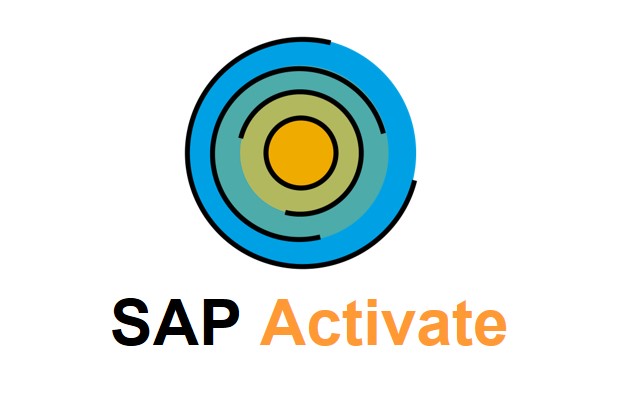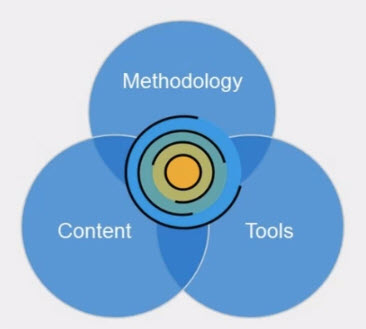
If you’re considering implementing SAP, one of the most critical decisions you’ll make is how to approach the implementation process. There are many factors to consider, including project scope, timeline, budget, and resource allocation, among others. Fortunately, SAP provides a comprehensive methodology known as SAP Activate to guide organizations through the entire implementation process. In this article, we’ll take a look at SAP Activate, its key components, and how it can help your organization achieve a successful SAP implementation.
The Accelerated SAP (ASAP) methodology was the suggested standardized approach for implementing SAP software solutions for many years. The history of ASAP can be traced back to the 1990s, when SAP started developing software implementation methodologies to support its growing customer base. This methodology evolved and was used by thousands of companies worldwide to successfully implement SAP software, until 2015, when SAP company introduced SAP Activate.
SAP’s decision to replace the ASAP (Accelerated SAP) methodology with the Activate methodology was driven by several factors, including the need for a more agile, flexible, standardized, collaborative, and iterative approach to implementing its software solutions. The Activate methodology reflects SAP’s desire to provide a more streamlined and accelerated approach to implementing SAP software solutions, resulting in a faster time-to-value, reduced risks, and a more successful implementation.
What is SAP Activate?
SAP Activate is an agile, iterative, and flexible approach to implementing SAP software solutions. It is built on four pillars: ready-to-run, agile and iterative, guided configuration, and quality-driven. Each pillar has a set of principles and tools that guide the implementation process. The methodology is designed to help businesses streamline their SAP implementation process, reduce costs and risks, and accelerate their time-to-value.
SAP Activate is organized into five phases: Discover, Prepare, Explore, Realize, and Deploy. Each phase has a specific set of deliverables, tasks, and milestones that guide the project team through the implementation process. Let’s take a closer look at each phase.
Discover Phase
The Discover phase is the initial stage of the implementation process, where the project team defines the project scope, objectives, and business requirements. The key deliverables in this phase include the project charter, business case, and high-level project plan. The project team also performs a feasibility study to determine whether the project is technically and financially feasible.
Prepare Phase
The Prepare phase is where the project team prepares for the actual implementation. The team defines the detailed project plan, identifies the project team members, and conducts a risk assessment. The key deliverables in this phase include the project plan, risk management plan, and organizational change management plan.
Explore Phase
The Explore phase is where the project team explores the SAP solution and identifies how it can meet the organization’s business requirements. The team performs a fit-gap analysis to identify any gaps between the standard SAP solution and the organization’s requirements. The key deliverables in this phase include the detailed functional requirements, process maps, and gap analysis report.
Realize Phase
The Realize phase is where the project team designs, configures, and develops the SAP solution. The team builds the system based on the requirements identified in the Explore phase, performs integration testing, and develops end-user training materials. The key deliverables in this phase include the system design document, configuration guide, test plan, and end-user training materials.
Deploy Phase
The Deploy phase is where the project team deploys the SAP solution to the production environment and conducts user acceptance testing. The team also provides end-user training, data migration, and cutover support. The key deliverables in this phase include the production system, data migration plan, and cutover plan.
As we can observe, SAP Activate differs from ASAP on many aspects. The ASAP methodology proposed a linear approach, while the Activate methodology is based on an iterative and agile approach. ASAP had a set of predefined deliverables for each phase, whereas Activate has fewer predefined deliverables and allows for more flexibility. ASAP included a large number of templates for documentation, and Activate has fewer templates and emphasizes collaboration and communication between different stakeholders. ASAP was highly customizable and allows for significant tailoring to meet specific business needs, while the Activate methodology is designed to be more standardized and less customizable. ASAP focused more on the technical aspects of implementation, while Activate places more emphasis on business process improvement and end-user engagement. Finally, ASAP was designed for a longer implementation timeframe, and Activate is designed for a shorter time-to-value and quicker return on investment.
The Benefits of SAP Activate
SAP Activate offers a number of benefits to companies looking to implement SAP solutions. One of the primary benefits is speed. The preconfigured content and templates provided by SAP Activate allow companies to get up and running with SAP solutions much faster than traditional implementation methods. This can lead to cost savings and a faster return on investment.
Another benefit of SAP Activate is flexibility. The framework can be customized to fit the specific needs of a company, and can be used to implement a wide range of SAP solutions. This means that companies can use SAP Activate to implement the solutions that are most important to them, without having to worry about whether the framework is the right fit.
Finally, SAP Activate offers a structured approach to implementation that can help companies stay on track and avoid common pitfalls. By following the methodology provided by SAP Activate, companies can ensure that they are taking all necessary steps to successfully implement SAP solutions. This can help to minimize risk and ensure a smooth implementation process.
SAP Activate is a powerful framework that can help companies implement SAP solutions quickly, efficiently, and with minimal risk. By providing preconfigured content, templates, and a structured methodology, SAP Activate can help companies get up and running with SAP solutions faster than traditional implementation methods. If you are considering implementing SAP solutions in your organization, SAP Activate is definitely worth considering.
In summary, SAP Activate is a proven approach to SAP implementation that can provide significant benefits to organizations. By following the methodology provided by SAP Activate, companies can minimize risk, reduce costs, and achieve a faster return on investment. With its flexibility and preconfigured content, SAP Activate can be used to implement a wide range of SAP solutions, making it an excellent choice for companies of all sizes and industries.

Discover our SAP consulting service


